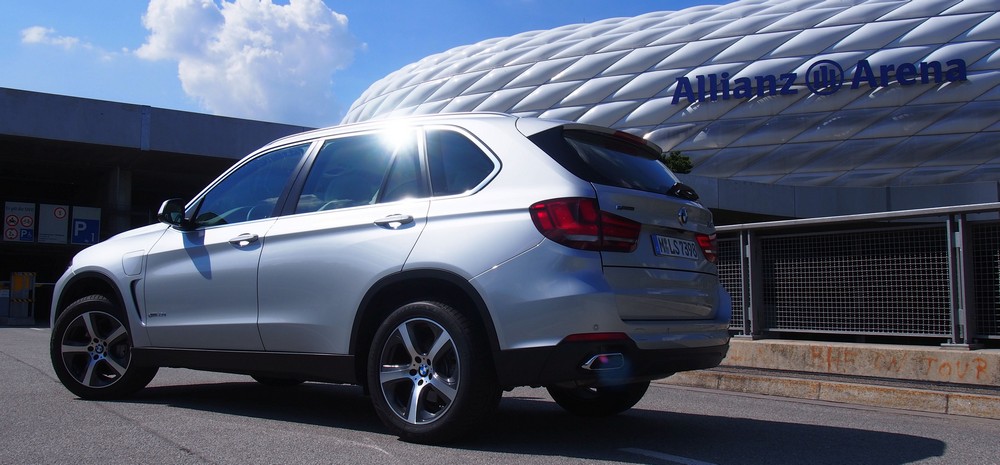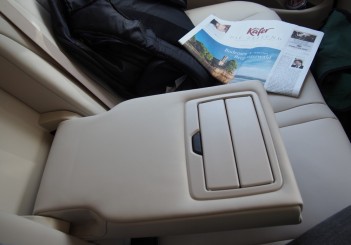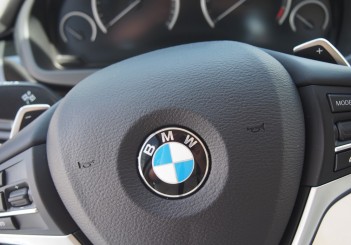
Since the X5 plug-in hybrid electric vehicle (PHEV) was announced last year, much has changed in the world of BMW. It’s marking its 100 years this year, and pronouncements from CEO Harald Kruger and his minions are painting a picture of a luxury car maker embracing an electro-mobility future.
If you haven’t heard by now, the so-called iNEXT self-driving connected electric model will replace the 7 Series as the brand’s flagship in 2021. And BMW is also busy this year upgrading its wares with improved engines and better connectivity.
BMW has every intention to stay relevant in a future where the combustion engine will continue to play a pivotal part of its business. What’s happening to the X5 is a sign of things to come. The SUV – or Sports Activity Vehicle (SAV) in BMW lingo – will be remembered as the first core model to adopt a hybrid drivetrain. Since its 2015 appearance, BMW has also dropped a PHEV into the 3 Series, 2 Series and 7 Series with more to come. All PHEVs will soon be known as iPerformance cars, and are derived from technical know-how gained from the BMW i3/i8 development, which set out to deliver exceptionally efficient performance as well as all-electric mobility with zero tailpipe emissions.
READ MORE:
Malaysia gets CKD BMW X5 PHEV at RM389,000
CKD Volvo XC90 PHEV is yours for RM405,000


We got wind of the X5 PHEV in March last year and a few months later, we were on our way to Munich to test-drive it. As many readers would know, review articles are often timed to appear closer to the local debut of the model in question. Such is the case now with the fully imported plug-in hybrid set to start selling this month, so here we are going on about it. In fact, BMW Malaysia has started a campaign to signal that the PHEV is close at hand.
The all-wheel drive X5 PHEV represents one of the first go-anywhere vehicle that allows for electric driving. The closest rival in Malaysia is the RM405,000 locally assembled Volvo XC90 PHEV. More will follow.
We reckoned the X5 hybrid would have won EEV tax perks for BMW to decide it’s time to bring it in. In the X5 xDrive40e, BMW has kept the hybrid expression as subtle as possible. Externally, the latest X5 variant looks much like a regular X5, a model that is over 15 years old. Now in its third-generation, it is smartened up with creases here and there, exuding an elegant yet commanding presence.

The base X5 features twin headlight units, which extends all the way to the kidney grille, and is combined with optional adaptive LED headlights and LED fog lights. Aerodynamic features include air curtains for the front apron, air breathers on the side walls and aeroblades at the rear of the car to help reduce drag.
Its hybrid status is marked out by the charging point flap on the left front wing and a twin-tailpipe design with trapezoidal tips. Besides the model badge at the front of the vehicle’s flanks, the “eDrive” logo is found on the tailgate, roof rails, doorsill strips and centre console.
The meter cluster has been modified with the lower part of the tachometer showing hybrid-specific information such as battery charge status, vehicle’s electric and total range. An eDrive button on the centre console allows the driver to change hybrid settings.
As the electric drive equipment goes under the boot floor, the plug-in X5 comes only as a spacious five-seater, not a seven. Boot volume is reduced by 150 litres to 500 litres, which is still a big space to load up. If more is needed, the 40/20/40 split for its rear-seat backrest opens up an even greater luggage capacity of 1720l.

There are more storage compartments at the front and rear door pockets – each able to accept 1.5-litre bottles and 1-litre bottles respectively. Further enhancing practicality, the X5 comes with a two-part tailgate while automatic tailgate operation of the upper section is also possible.
On top of the usual Comfort, Sport and Eco Pro drive modes common to the BMW range, the X5 PHEV comes with an eDrive button on the centre console that toggles between AUTO eDrive, MAX eDrive and SAVE Battery. In default AUTO eDrive, the motor gives the engine an added boost when accelerating or during occasional bursts of speed. MAX eDrive, best used in urban settings, is for driving in electric mode which offers a 30km range at up to speeds of 120kph.
But don’t be heavy-footed lest the “juice” runs out faster. BMW says that range is quite enough for most daily trips. The SAVE Battery mode can also be activated at the touch of a button, causing the high-voltage battery’s state of charge to be maintained or allowing energy to be accumulated again such as by means of recuperation, if capacity is low. In this way, electrical energy can be deliberately conserved for all-electric driving later in the journey.
The latest X5 is as easy to drive as its non-hybrid breathrens. The light steering, refined and responsive engine and gearbox, and good body control come together to induce a relaxing ambience in the cabin.

Permanent all-wheel drive provides high grip levels, ensuring most road surfaces don’t throw the car off-kilter. In addition, comfortable seats all round and luxurious surrounds mean travelling for hours is not an exhausting pursuit.
At 2.3 tonnes, this X5 is a much heavier car than its non-hybrid siblings because of the large Li-ion battery under the boot, making it tail heavy. But it’s no sluggard, managing the 0-100kph run in 6.8s. The respectable performance is not just due to the lump upfront but also the electric motor that feeds 250Nm of instant torque to help propel the car. The 9kWh electric motor is integrated with the 8-speed Steptronic transmission, which means all-wheel drive is available even in pure electric driving.
When driving conditions require handover of duty between engine and motor, the transition is near seamless, with the rpm pointer jerking back to life to indicate the engine is now running. When the car runs only electricity, it is silent and the engine is quick to intervene when electric power is nearly depleted.

The car uses the award-winning turbocharged 2.0-litre petrol engine. System output and torque are 313hp and 450Nm. Mating the electric motor with an already fuel-efficient engine is a recipe for even greater fuel efficiency.
The car claims a combined fuel consumption of 3.4 – 3.3 litres per 100km and a combined electricity consumption of 15.4 – 15.3 kWh over the same distance. CO2 emissions come in at 78 – 77 grams per kilometre.
You can still have your jollies in Sport mode when the car stiffens up and the engine and motor work hard to deliver driving fun. The tall beefy body exhibits a slight roll when placed into corners at speeds but the xDrive holds it to a steady course.

The engine or regenerative braking are not enough to fully charge the battery, so plug in you must. Charging from home socket takes about 4 hours or under 3 hours with BMW i Wallbox or free public chargers.
Once the X5 xDrive40e is launched, it will provide a third variant and the most fuel efficient one at that with a chance to go greener in daily motoring sojourns.
It would be remiss not to cross-shop the X5 PHEV with the XC90 PHEV as well and see which one gets your money.

















































OLYMPUS DIGITAL CAMERA










